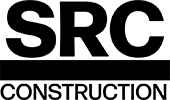
The Hidden Costs Controllers Miss When Selecting Construction ERP Systems
Selecting an ERP system ranks among the most critical business decisions you'll make as a construction controller. According to a 2021 Controllers Council survey, 33% of controllers are currently planning or evaluating new systems for their accounting, bookkeeping, or ERP services. With 20% of top construction firms on ENR's Top 400 Contractors list choosing Premier as their construction ERP system, we know the stakes are high when making this investment.
However, beyond the obvious considerations in the ERP selection process, there are numerous hidden costs that many controllers overlook. These overlooked expenses can have a significant impact on your bottom line and team efficiency. Throughout our years working with construction companies, we've identified specific ERP system selection criteria that help prevent costly mistakes. In fact, the proper ERP evaluation criteria can make the difference between a system that unifies your core business activities and one that creates more problems than it solves.
In this article, I'll walk you through the most missed costs when selecting construction ERP systems and provide a practical framework to help you make a more informed decision.
The cost of sticking with outdated systems
While outdated systems might feel familiar to your team, they silently drain resources from your construction business every day. Studies show that the average ERP system should be replaced every 5-10 years; yet many construction companies continue to use systems that are nearly 20 years old. This reluctance to upgrade creates substantial hidden costs that aren't immediately visible on balance sheets.
Manual workarounds that drain time and money
Construction teams waste up to 27 hours monthly on manual data entry alone. These workarounds develop because your current system either can't perform needed functions or users believe it can't. Either way, the result is the same - productivity suffers.
"If you have to create workarounds and fix errors by hand, that's a good sign that you may have outgrown your current system," notes one industry expert.
These inefficiencies multiply as your business grows. For projects using paper-based systems, the budget overrun rate soars to 75%. Furthermore, manual processes create troublesome data silos where critical project information gets trapped, limiting visibility across departments.
Construction companies with outdated ERPs typically face three expensive choices:
- Continue with inefficient manual processes
- Purchase disconnected third-party solutions that don't integrate properly
- Invest significant resources in customizing outdated technology
Delayed reporting and stale financial data
Outdated ERP systems often process data in batches rather than in real-time, creating a dangerous gap between what's happening in the field and what's reflected in your financial reports.
"This delay creates a gap between what is happening in the field and what is shown in financial records. Discrepancies often go unnoticed until the next sync, at which point responses are reactive instead of preventative".
Real-time financial visibility isn't just convenient—it's essential for proactive project management. Without it, controllers and project managers make decisions based on outdated information, potentially missing critical cost overruns until it's too late to correct course.
Overlooked integration gaps that create silos
Construction teams often focus on individual software features during the ERP system selection process, overlooking a more fundamental issue: integration gaps. Almost half of all rework in construction stems from poor communication and project information, creating expensive silos that damage your bottom line.
Disconnected project and financial data
The division between accounting and project management teams creates a dangerous blind spot. When these departments operate in silos, business leaders lose visibility into crucial metrics, such as costs versus budgets, completed tasks, and project profitability. This disconnect means key decision-makers remain "behind the information instead of on top of it".
Consider what happens when your project management team uses one system while accounting uses another. McKinsey reports an alarming statistic: 95% of construction data goes unused, primarily because it's trapped in disconnected systems that don't communicate. This data isolation leaves controllers making financial decisions without seeing the complete picture of what's happening in the field.
Duplicate data entry across systems
Many construction companies end up "running payroll twice" - once in their HR system and again in their ERP system. This duplicate effort creates a cascade of problems:
- Valuable staff time wasted on repetitive tasks
- Increased error rates from manual re-entry
- Frustrated teams dealing with contradictory information
- Version conflicts that erode trust in reported data
When employees must enter the same information multiple times across different platforms, it creates unnecessary work, inevitable errors, and team frustration. One study found that construction professionals spend 35% of their time (over 14 hours weekly) on non-productive activities, such as searching for project information and resolving conflicts caused by mismatched data.
Missed insights from a lack of real-time visibility
Without integrated systems, construction companies miss critical opportunities to identify problems before they escalate. Deloitte notes that firms using real-time data systems have reduced project delays by 25% and improved budget adherence by 15%.
The consequences of fragmented data become especially severe during time-sensitive decisions. Consider a typical scenario: formwork is ready, but reinforcement hasn't arrived. The project manager checks their system, which shows a delivery date of the 18th, yet the procurement system shows the 25th. With no connection between systems, nobody catches this discrepancy until work grinds to a halt.
When evaluating ERP systems, making integration capabilities a core selection criterion pays dividends through improved communication, reduced errors, and faster decision-making based on complete information.
The long-term price of poor scalability
The global construction industry is growing at a compound annual rate of 4.2% and is projected to reach USD 10.50 trillion by 2023. Yet many controllers overlook a critical aspect of the ERP system selection process: scalability. What happens when your business outpaces your technology?
Outgrowing your ERP too soon
Legacy ERP systems often hit their limits just as your company gains momentum. As organizations take on larger projects or more complex operations, these systems struggle to keep pace. Consequently, your teams create workarounds and exceptions to what would otherwise be optimal workflows.
One construction company described their experience: "We were on a first-generation ERP. It was simple, but it wasn't scalable, so it didn't grow with us. There was a lot of double-checking to make sure that the legacy ERP system was talking back and forth all the time".
When evaluating ERP systems, scalability should be a primary criterion—not just for today's needs, but tomorrow's growth opportunities.
Costly re-implementations down the road
Most companies underestimate implementation costs by 30-50%. Subsequently, when you outgrow your system too quickly, you face these expenses again—often much sooner than anticipated.
The hidden costs of re-implementation include:
- Lost productivity during transition periods
- Additional consulting fees (typically USD 150-300 per hour)
- Customization expenses that can easily double software costs
- Training requirements for your entire team
- Project delays from system switchovers
Essentially, choosing an insufficiently scalable system creates a ticking financial time bomb. One construction firm that made the right choice in its ERP selection process achieved impressive results after implementation: $850,000 worth of additional service agreements in its first year and a 16% growth in turnover.
Inflexibility during mergers or expansions
As your business pursues growth opportunities, a rigid ERP creates painful limitations. Older systems typically struggle with multi-entity projects, joint ventures, and compliance tracking required for expansion.
Organizations with complex processes, multiple locations, or global operations face higher costs due to increased implementation complexity. Furthermore, server-based legacy systems limit your ability to work efficiently across different locations, creating barriers to geographic expansion.
Ultimately, scalability isn't just about handling more data—it's about supporting changing business models. Without a system designed to grow alongside your company, you risk watching competitors leverage modern systems while you're stuck with inefficient, costly workarounds.
Including scalability in your ERP evaluation criteria now prevents painful limitations later, ensuring your technology supports your ambitions rather than restricting them.
Underestimating the cost of user adoption
Many construction companies fixate on software features when evaluating ERP systems, yet completely overlook what ultimately determines success: user adoption. Research shows 26% of employees don't use their company's ERP system, with 51% of businesses facing operational disruptions after implementation.
Training gaps that slow down teams
Training costs are consistently underestimated throughout the ERP selection process. Most construction firms provide one-size-fits-all training that fails to address how different roles interact with the system. Without role-specific guidance, users become overwhelmed, disengaged, or prone to errors.
The problem worsens over time as static training materials quickly become outdated when systems evolve through configuration changes or updates. Without continuous learning opportunities, users forget critical steps or develop inefficient workarounds.
Low morale from clunky interfaces
Poorly designed interfaces can have a significant impact on team morale. When forms are cluttered or unclear, workers make more entry errors. These frustrations multiply as teams struggle with systems that aren't intuitive.
For construction teams transitioning from legacy systems, interface problems often lead to burnout and turnover, particularly among IT and finance personnel tasked with managing the implementation. Managers frequently underestimate how much resistance will emerge from employees accustomed to traditional methods.
Shadow systems that bypass ERP entirely
When ERP systems fail to meet user needs, employees create shadow systems – unauthorized software solutions that operate outside your official systems—these range from simple spreadsheets to complex databases.
Shadow IT develops for various reasons:
- The ERP lacks the necessary functionality
- Users find the official system too cumbersome
- Teams need specialized tools for specific tasks
Although shadow systems might temporarily solve problems, they create serious risks, including data inconsistency, compliance issues, and wasted resources on maintaining parallel processes.
When developing your ERP evaluation criteria, consider user adoption metrics such as interface quality and comprehensive training plans. Remember that the most feature-rich system fails if your team refuses to use it.
Ignoring the total cost of ownership (TCO)
Most construction controllers focus solely on upfront ERP costs, missing the bigger financial picture. The sticker price of most ERP systems is merely a distraction—licensing fees typically represent under 10% of total costs. Understanding the complete Total Cost of Ownership (TCO) should be central to your ERP selection process.
Hidden fees in licensing and upgrades
Licensing structures often contain expensive surprises that blow budgets. Modern ERP systems typically use modular architecture, allowing you to buy portions rather than the entire software. While this offers flexibility, it complicates the cost forecasting process.
Many vendors advertise their smallest modules at enticing entry-level prices, only for customers to discover these don't cover operational requirements. This forces you to purchase additional, expensive modules—sometimes after signing multi-year contracts.
For construction companies, pricing varies dramatically based on size:
- Small contractors ($10M-$30): ~$20,000-$40,000/year in subscription fees
- Mid-size contractors ($30M-$100M): ~$40,000-$80,000/year
- Enterprise contractors ($100M+): ~$60,000-$80,000+/year
Ongoing support and maintenance costs
Support expenses persist long after implementation. For on-premise systems, annual maintenance fees typically run about 20% of the initial license cost. Cloud-based subscriptions usually bundle support, yet often include different tiers with varying prices.
Beyond standard maintenance, consider these recurring expenses:
- Training for new staff and system updates
- System administrator resources
- Continuous phone and web support
- Hardware and infrastructure updates
These ongoing operational costs should be factored into your budget for at least 8-10 years. Notably, the uncertainty in maintenance costs increases the longer you use the system.
Customization and integration expenses
Customization costs can spiral quickly, accounting for 10-30% of your total ERP implementation budget for moderate modifications. For extensive changes, the financial burden grows even larger.
Initial customization is merely the beginning. Once custom features are implemented, they require ongoing maintenance to ensure compatibility with evolving ERP versions, costing anywhere from $10,000 to $100,000 annually.
Integration with other systems similarly drives up expenses, particularly for construction companies with complex IT infrastructures. Many organizations need to integrate their ERP with existing enterprise software, hardware systems, and third-party applications—sometimes requiring custom interfaces and data integration solutions.
Including TCO analysis in your ERP evaluation criteria prevents budget surprises and positions your company for sustainable technology investment.
The ERP selection process controllers should follow
A structured approach to ERP system selection saves controllers from costly mistakes. After seeing the hidden expenses of poor choices, let's examine how to select the proper construction ERP system for your organization.
Start with a full audit of current systems
First, perform a thorough needs assessment of your existing processes. Document specific pain points, inefficiencies, and manual workarounds your team currently uses. This audit should identify bottlenecks across departments, from accounting to field operations.
Define ERP system selection criteria with stakeholders
Assemble a cross-functional team including frontline workers, project managers, and executives. This collaborative approach ensures the system addresses comprehensive needs rather than just executive priorities. Document both "must-have" and "nice-to-have" requirements to guide vendor evaluations.
Use ERP evaluation criteria to compare vendors
Evaluate potential vendors against your documented requirements, focusing on:
- Functional compatibility with construction workflows
- Industry expertise in construction-specific processes
- Integration capabilities with existing systems
- Support quality and responsiveness
- Total cost of ownership over 5-10 years
Prioritize future-proofing and automation
Finally, select a system that grows with you. Nearly 89% of companies rate accounting as the most critical ERP function, yet your system must stretch beyond finance to support evolving business models. Evaluate each vendor's automation capabilities and commitment to continuous product innovation.
Key Takeaways
Construction controllers often focus on upfront ERP costs while missing critical hidden expenses that can significantly impact long-term profitability and operational efficiency.
• Outdated systems drain resources through manual workarounds - Teams waste 27 hours monthly on data entry, with 75% budget overrun rates on paper-based projects
• Integration gaps create expensive data silos - 95% of construction data goes unused due to disconnected systems, leading to duplicate work and missed insights
• Poor scalability forces costly re-implementations - Companies underestimate implementation costs by 30-50% and face these expenses again when outgrowing systems too quickly
• User adoption failures undermine ERP investments - 26% of employees don't use company ERP systems, creating shadow systems and operational disruptions
• Total cost of ownership extends far beyond licensing - Hidden fees, customization, and ongoing support can double or triple anticipated budgets over 5-10 years
The key to successful ERP selection lies in conducting thorough audits, involving cross-functional stakeholders, and evaluating systems based on comprehensive criteria that account for future growth and actual operational costs.
FAQ
Q1. What are some hidden costs of outdated ERP systems in construction? Outdated ERP systems often lead to manual workarounds, delayed reporting, and inefficient workflows. These can result in wasted time on data entry, budget overruns, and increased labour costs due to redundant tasks and miscalculations.
Q2. How do integration gaps affect construction companies? Integration gaps create data silos, leading to disconnected project and financial information. This results in duplicate data entry, missed insights, and poor communication between departments, ultimately impacting decision-making and project profitability.
Q3. Why is scalability important when selecting a construction ERP system? Scalability is crucial because it allows the ERP system to grow with your business. Poor scalability can lead to outgrowing the system quickly, costly re-implementations, and inflexibility during mergers or expansions, hindering your company's growth potential.
Q4. What user adoption challenges should controllers consider when selecting an ERP? Controllers should consider training gaps, interface usability, and the potential for shadow systems to ensure optimal performance. Poor user adoption can lead to operational disruptions, low team morale, and the creation of unauthorized workarounds that bypass the official ERP system.
Q5. How can controllers accurately assess the total cost of ownership (TCO) for an ERP system? To assess TCO, controllers should look beyond initial licensing fees and consider hidden costs such as ongoing support and maintenance, customization expenses, integration costs, and potential upgrade fees. It's essential to factor in these expenses over a 5-to 10-year period for accurate budgeting.
Latest articles
Trusted by global leaders
Join those who have put their trust in us



















